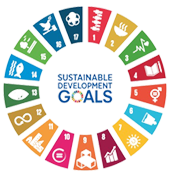Sumit Kumar, Mandeep Kaur
The aim of the study is to estimate the extent and determinants of healthcare expenditure of inpatients on childbirth in India. The study is based on sample of 14510 women who gave birth to a child (whether live or still-birth, vaginal or caesarean). To estimate the determinants two-part models has been utilised. The results indicate that women spent on average around INR 9103 per childbirth in hospitals. There are also wide variations in the spending pattern of women on childbirth. Household size, economic status, occupation, religion, and caste impact the expenditure on childbirth in hospitals. There are also wide variations in the spending of women belonging to different geo-graphical locations of India. Surgeries/caesarean or utilisation of facilities like special room and diagnostic tests etc. also significantly increase the expenditure. Women opting for public health facilities or having insurance spend less as compared to others. Government of India should increase investment in health to strengthen its current infrastructure. There is dire need to improve the quality of public health facilities, to reduce the regional imbalances in health facilities, to improve the coverage of health insurance in India for equitable and pro-people health facilities.
Ashraf, N., Field, E., & Lee, J. (2014, July). Household Bargaining and Excess Fertility: An Experimental Study in Zambia. American Economic Review, 104(7), 2210–2237. https://doi.org/10.1257/aer.104.7.2210
Alfo, M., & Maruotti, A. (2010). Two-part regression models for longitudinal zero-inflated count data. The Canadian Journal of Statistics / La Revue Canadienne de Statistique,
(2), 197-216. Retrieved from https://doi.org/10.1002/cjs.10056
Campbell, D. (2010, December 31). https://www.theguardian.com/society/2010/dec/31/pregnancy-mothers-fertilitychildren. Retrieved 5 27, 2018, from www.theguardian.com/:https://www.theguardian.com/society/2010/dec/31/pregnancy-mothers-fertility-children
CBHI, C. B. (2016). National Health Profile, 2015. New Delhi: Central Bureau of Health Intelligence. Retrieved 5 27, 2018, from http://www.indiaenvironmentportal.org.in/files/file/ NHP-2015.pdf
Columbia University. (n.d.). Healthcare in India. Healthcare in India. United Kingdom: Columbia University. Retrieved 5 27, 2018, from http://assets.ce.columbia.edu/pdf/actu/actu-india.pdf
Dow, W. H., & Norton, E. C. (2003). Choosing Between and Interpreting the Heckit and Two-Part Models for Corner Solutions. Health Services and Outcomes Research
Methodology, 4(1), 5–18. https://doi.org/10.1023/A:1025827426320
Farewell, V. T., Long, D. L., Tom, B. D. M., Yiu, S., & Su, L. (2017). Two-Part and Related Regression Models for Longitudinal Data. Annual Review of Statistics and Its
Application, 4(1), 283–315. https://doi.org/10.1146/annurev-statistics-060116-054131
Gregori, D., Petrinco, M., Desideri, A., Merletti, F., & Pagano, E. (2011, April 19). Regression models for analyzing costs and their determinants in health care: an introductory
review. International Journal for Quality in Health Care, 23(3), 331–341. https://doi.org/10.1093/intqhc/mzr010
Gupta, I., & Dasgupta, P. (2002). Health-seeking behavior in urban Delhi: an exploratory study. World Health and Population, 3(2), 1. https://doi.org/10.12927/whp..17580
IIPS, I. I., & ICF. (2017). National Family Health Survey (NFHS-4), 2015-16: India. Mumbai: International Institute for Population Sciences (IIPS). Retrieved 5 25, 2018, from
http://rchiips.org/NFHS/NFHS-4Reports/India.pdf
Jones, A. M. (2010, January). Models For Health Care. HEDG Working Paper, 10/01. Retrieved 5 28, 2018, from https://www.york.ac.uk/media/economics/documents/
herc/wp/10_01.pdf
Kesterton, A. J., Cleland, J., Sloggett, A., & Ronsmans, C.(2010). Institutional delivery in rural India: the relative importance of accessibility and economic status. BMC Pregnancy Childbirth, 10, 30. https://doi.org/10.1186/1471-2393-10-30
Kumar, S. (2015). Financial Consequences of Illness: Evidence from slums of India. New Delhi: Cambridge University Press India Pvt Ltd (CUPIPL).
Kumar, S. (2015). Private Sector in Healthcare Delivery Market in India: Structure, Growth and Implications. New Delhi: Institute for Studies in Industrial Development (ISID).
Retrieved 05 26, 2018, from http://isid.org.in/pdf/WP185.pdf
Leung, S. F., & Yu, S. (1996). On the choice between sample selection and two-part models. Journal of Econometrics, 72(1-2), 197-229. https://doi.org/10.1016/0304-4076(94)01720-4
Madden, D. (2006). Sample Selection Versus Two-Part Models Revisited: The Case of Female Smoking and Drinking. Health Econometrics and Data Group (HEDG)-Working
Paper, 6/12, 1. Retrieved 5 27, 2018, from https://www.york.ac.uk/media/economics/documents/herc/wp/06_12.pdf
Mahal, A., Yazbeck , A., Peters, D., & Ramana, G. (2001, August). THE POOR AND HEALTH SERVICE USE IN INDIA. Health Nutrition and Population (HNP) Discussion Paper, 1. Retrieved 5 25, 2018, from http://siteresources.worldbank.org/HEALTHNUTRITIONANDPOPULATION/Resources/281627-1095698140167/Mahal-ThePoorAnd-whole.pdf
Minh, H. V., Phuong, N. T., Saksena, P., James, C. D., & Xu, K. (2013). Financial burden of household out-of pocket health expenditure in Viet Nam: Findings from the National Living Standard Survey 2002-2010. Social Science and Medicine, 96, 258–263. https://doi.org/10.1016/j.socscimed.2012.11.028
Nair, H., & Panda, R. (2011). Quality of maternal healthcare in India: Has the National Rural Health Mission made a difference? Journal of Global Health, 1(1), 79–86.
Retrieved 05 26, 2018, from https://www.ncbi.nlm.nih.gov/pmc/articles/PMC3484741/
Neelon, B., & O’Malley, A. J. (2019). Two-Part Models for Zero-Modified Count and Semicontinuous Data (pp. 695–716). https://doi.org/10.1007/978-1-4939-8715-3_39
NITI-Ayog. (2017, 1 21). Maternal Mortality Ratio. Retrieved 5 27, 2018, from niti.gov.in: http://niti.gov.in/content/maternal-mortality-ratio-mmr-100000-live-births#
NSSO, N. S. (2015, July 28). Social Consumption in India: Health, NSS 71st Round. Social Consumption in India: Health, NSS 71st Round. New Delhi, New Delhi, India:
National Sample Survey Office – Ministry of Statistics and Programme Implementation(MOSPI), Government of India (GOI).
Prakash, A., & Saxena, A. (2016). Health in north-east region of India – The new focus of attention. Indian Journal of Medical Specialities, 7, 93–94. https://doi.org/10.1016/j.injms.2016.09.013
Russell, S. (2004). The Economic Burden of Illness for Households in Developing Countries: A Review of Studies Focusing on Malaria, Tuberculosis, and Human Immunodeficiency Virus/Acquired Immunodeficiency Syndrome. American Journal of Tropical Medicine and Hygiene, 71(2 (Supplementary)), 147-155. Retrieved 5
, 2018, from https://doi.org/10.4269/ajtmh.2004.71.147
Singh, S., & Kumar, S. (2009). Determinants of Health Seeking Behaviour of Households in Punjab. Research Journal of Social Sciences, 17(1), 33–49.
Soonawala, R. P. (2010, December 16). https://www.indiatoday.in/lifestyle/health/story/pregnancy-after-30-tough-or-easy-87196-2010-12-16. Retrieved 5 27, 2018,
from www.indiatoday.in: https://www.indiatoday.in/lifestyle/health/story/pregnancy-after-30-tough-or-easy-87196-2010-12-16
Tripathy, J. P., Shewade, H. D., Mishra, S., Kumar, A., & Harries, A. (2017). Cost of hospitalization for childbirth in India: how equitable it is in the post NRHM era?
BMC Research Notes, 10, 409. https://doi.org/10.1186/s13104-017-2729-z


